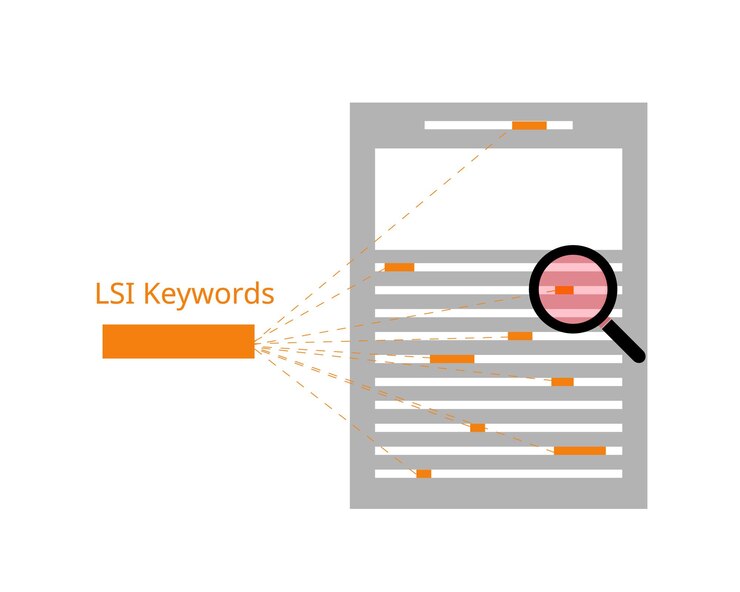
Using Latent Semantic Indexing (LSI) to Create an SEO Advantage
Latent Semantic Indexing (LSI) is a powerful tool that can be used to improve your website’s SEO. LSI essentially looks at the relationships between words and concepts in order to better understand the meaning of a piece of content. This understanding can then be used to match that content with relevant searches, helping you to rank higher in search engine results pages (SERPs).
While LSI is a fairly complex topic, there are some simple things you can do to take advantage of it.
Here are three tips for using LSI to improve your SEO;

1. Use relevant keywords throughout your content.
Make sure to include relevant keywords throughout your content, including in the title, headings, and body. This will help search engines match your content with relevant searches.
2. Structure your content in a logical way.
LSI looks at the relationships between concepts in order to understand the meaning of a piece of content. As such, it’s important to structure your content in a way that is easy for LSI algorithms to understand. A clear and well-organised article will fare better than one that is all over the place.
3. Use related keywords and phrases.
In addition to using relevant keywords, you can also use related keywords and phrases throughout your content. This will help search engines better understand the context of your article and match it with relevant searches.
By following these tips, you can use LSI to your advantage and improve your website’s SEO.
Today, latent semantic indexing is used in search engines’ processes for organising and classifying content. LSI employs mathematical approaches to identify connections between words and ideas. Along with directly related content, semantically linked material is further analysed and indexed. It’s crucial to remember that these aren’t synonymous. Instead, it’s a connection between the terms.
Is LSI Different From LSA?
You’ve also heard of LSA (latent semantic analysis), which was introduced somewhat later. It’s an extension of the original LSI framework. Natural language is handled using the same method as before, with LSI providing the technical foundation.
The idea behind LSA is that processing paperwork allows you to figure out the ideas contained in each by recognizing the general concept. Latent semantic analysis focuses on the meaning of the document or article in order to draw more reliable conclusions about the connection between words. In plain English, it boils down to this: it “grabs” what’s being said. The start of data processing as we know it occurred when people used relationships discovered through LSI and LSA.
How Does LSI Work?
When analysing a string of words or a query, LSI removes terms that aren’t relevant to the phrase or keyword. “Stop” words are known as “stop” words and have no bearing on the message’s overall meaning. Instead, LSI recognizes how phrases connected with Microsoft and Xbox are linked together.
Google, for example, uses the remaining words from your search query to calculate a score against Google’s Search Quality Evaluator Guidelines document that is kept behind the scenes

The document contains user-intent categories including:
- Visit-in-Person Queries
- Do Queries
- Website Queries
- Know Queries
Understanding the significance of a user’s intent allows search engines to define the contextual meaning of a phrase in order to provide the most relevant search results. Search engines such as Google are intelligent and adept at determining the meaning behind your words by looking at how they relate in the same frame. If your website is about drumsticks, pedals, guitars, and cymbals, LSI will link it to music.
What Makes LSI Important?
Crawler bots in the early days of search engines crawled websites for primary keyword direct uses to assist them categorise site material. Because keyword density was such an important consideration, it was typical for sites to repeat certain keywords throughout their content. Your site may be penalised today for employing such strategies. “Keyword stuffing” is when a term is used excessively; there’s no “tried and true” amount of uses that Google considers acceptable.
As a result, “keyword density” has mostly been abandoned in high-performing SEO. LSI is powerful enough to correctly identify your topic without you having to expressly tell Google what your page is about nowadays. As we all know, algorithms are getting increasingly sophisticated – and they’re learning! It’s more likely to say “Hey Google, here’s exactly what not to rank me for” if you deliberately insert your keyword a specific number of times.
Should Marketers Incorporate LSI?
Synonyms and variants are necessary for optimising your web content, according to several experts. This is because not everyone will search for the same term.
You might have a few different ways to search:
- Ohio pool repair
- Pool repairman in Ohio
- Get my pool repaired in Ohio
There are a few more options, but the idea is clear. LSI applications can help you generate terms that will assist search engines in indexing your website. You must still write in an authoritative tone, but incorporating LSI in your material allows customers to locate the answer you offer.

What Are the Benefits of Using Latent Semantic Indexing?
One of the most significant advantages of latent semantic indexing is that it prevents you from being defined as spam. Variant usage elevates your site’s reputation and your user is more likely to have a positive experience when they search on it. LSI, in some respects, is the polar opposite of keyword overuse.
By using LSI keywords, your bounce rates will go down. These kinds of keywords provide more depth to your website and are thus less likely to be categorised incorrectly. It’s a little bit of a hidden connection, but the idea is that you’ll have fewer “junk visitors.”
When you use the LSI keywords on your website, they appear to be more natural. Because they are relevant, your audience will be more likely to stay on your website if words flow. Your site’s score improves naturally as a consequence of the search engines’ greater comprehension of it.
How Do You Use LSI Keywords?
You want to use relevant LSI keywords throughout your site, but they must be natural in order to be successful. Overdoing anything with a specific word is a bad idea because you’d prefer the number of distinct variation occurrences to be as low as possible. To get optimum results, utilise each LSI term only once per page and integrate many variants. Essentially, an essay or speech is the greatest example of latent semantic indexing. You generally look for synonyms, neighbouring words, and make these discoveries naturally. Repetition of the whole essay topic would appear odd .
If you’re creating a blog post about “The History of Eggplants,” you don’t want to beat this exact phrase into the ground. You may use words like “eggplant history,” “previous eggplant harvesting techniques,” or “recent eggplant developments” as semantic choices. The main topic is still history, and there are several ways to refer to it (as when speaking with another individual). To add latent semantic indexing to your pages, simply talk for a person (not a search engine).
There are tools being developed as well, such as LSI keyword generators and WordPress plugins. However, as previously stated, this may result in varied outcomes. When unsure, ask yourself whether a person would say it to you like that. That’s what Google is looking for as well. It has a poor opinion of individuals who try to “game the algorithm,” which is precisely what stressing the same key phrase will accomplish. This was formerly a fast method to earn bonus points with a search engine. These days, Google understands the difference.
LSI Is an Indexing and Retrieval Method
Today, latent semantic indexing is still important in SEO. By including LSI keywords into your content, your SEO will improve naturally, resulting in an improvement in search engine rankings.
Latent Semantic Indexing (LSI) is a powerful tool that can be used to improve your website’s SEO. LSI essentially looks at the relationships between words and concepts in order to better understand the meaning of a piece of content. This understanding can then be used to match that content with relevant searches, helping you to rank higher in search engine results pages (SERPs).

How to Implement LSI in Your SEO Strategy
Conducting LSI Keyword Research
Google’s Hidden Clues
Search engines like Google provide valuable insights into LSI keywords. Simply enter your primary keyword into the search bar and scroll to the bottom of the results page. You’ll find a list of related searches – these are potential LSI keywords.
Content Optimization
Creating LSI-Infused Content
Now, let’s get practical. When Using Latent Semantic Indexing (LSI) to Create an SEO Advantage, it’s essential to weave LSI keywords naturally into your content. Avoid stuffing them unnaturally; instead, let them flow organically.
Diversifying Content Types
Beyond Text
Don’t limit yourself to text-based content. LSI can enhance the effectiveness of images, videos, and even infographics. Diversify your content portfolio for a broader reach.
FAQs
Q: How many LSI keywords should I use in an article? A: There’s no fixed number. Use LSI keywords naturally, maintaining the flow and readability of your content.
Q: Can LSI keywords replace my primary keyword? A: No, they complement your primary keyword, offering context and relevance.
Q: Is LSI only for written content? A: No, LSI can be applied to all content types, including multimedia.
Q: How often should I update my LSI keywords? A: Regular updates are beneficial, especially as trends and user behavior evolve.
Q: Are there tools to help with LSI keyword research? A: Yes, various SEO tools can assist in finding relevant LSI keywords.
Q: Can LSI be applied to local SEO? A: Absolutely, LSI keywords can boost local SEO efforts by enhancing content relevance.
Conclusion
Using Latent Semantic Indexing (LSI) to Create an SEO Advantage is not a passing trend; it’s an essential strategy for modern digital marketers. By understanding the nuances of LSI and applying it strategically, you can significantly improve your website’s search engine ranking, user engagement, and overall online presence.
Incorporate LSI keywords naturally, keep your content diversified, and stay up-to-date with the latest trends. With dedication and a solid LSI strategy, your website can rise to the top of search engine results and attract the organic traffic it deserves.
Thank you for exploring the world of Using Latent Semantic Indexing (LSI) to Create an SEO Advantage with us.






